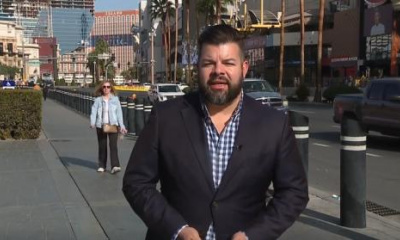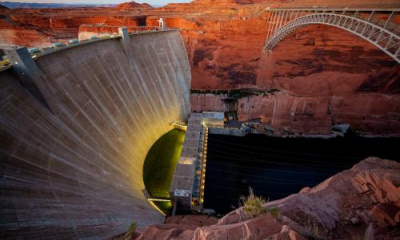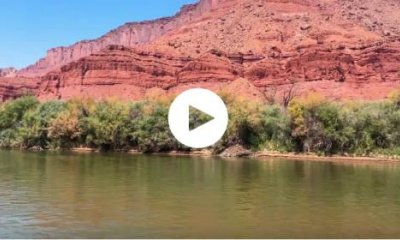SALT LAKE CITY — Federal officials last week finalized a near-term plan that the seven Colorado River Basin states, including Utah, agreed to last year, which is expected to save at least 3 million acre-feet of water over the next three years.
The Bureau of Reclamation signed a Supplemental Environmental Impact Statement, the final step after the agency announced in March that it had accepted the states' plan. The plan calls on cuts in the Lower Basins states of Arizona, California and Nevada, while three California water districts also agreed to an additional 400,000 acre-feet of cuts by the end of 2026.
"I think it's definitely a step in the right direction," said Amy Haas, executive director of the Colorado River Authority of Utah, in an update about the river Wednesday. "I think it shows a commitment on the part of lower division states to reduce use. Our concern in the Upper Basin has always been whether we'll actually see those reductions ... but I am encouraged."
The update comes as the Upper Basin states — Utah, Colorado, New Mexico and Wyoming — and Lower Basin states continue to hash out a deal for post-2026 operations of Lake Powell and Lake Mead, the country's two largest reservoirs, which play a large role for how the states and other entities consume water from the river.
The two sides proposed different plans for managing the reservoirs. They're essentially split on who should bear the burden of water cuts after the reservoir levels drastically dropped from drought and overconsumption.
Gene Shawcroft, Utah River commissioner and president of the Colorado River Authority of Utah, said the states met three or four times since March and plan to meet more. While there's no agreement yet, he said there has been "progress" on a long-term solution largely because all seven states believe that they're in a "much better position" if they agree on a plan together than to have the federal government impose a plan on them.
Most of the discussions have centered on topics that the states can agree on, such as a 1.5 million acre-foot decrease in water consumption from the system to account for overconsumption. There's also an understanding that future operations should focus on existing conditions within the basin over water forecasts because snowpack runoff averages have been worse than snowpack collections in recent years, which led to some of the overconsumption problems.
"When the initial proposals were submitted, the desire to work together probably waned a bit, but in the last few meetings, we've made much progress in recognizing we have to come up with a solution," Shawcroft said. "I think the commitment level to stick together on a seven-state proposal is significantly higher now than it was a few weeks ago."
The Bureau of Reclamation could ultimately approve bits and pieces of the two plans or other alternatives that are recommended, he added.
Lake Powell — located along the Utah-Arizona border — is also on the rise as the spring snowmelt season continues.
It has already gained about 4 feet and could gain about another two dozen feet by the end of June, according to the Colorado River Authority of Utah. After falling to a new all-time low in early 2023, it gained about 65 feet from last year's snowpack before it dropped 30 feet after the snowmelt peak; however, this year's dip could be lower with the short-term reduction plan in place.
The Colorado River provides water to about 40 million people throughout the West. It also accounts for more than a quarter of Utah's water supply, which directly benefits about 60% of all Utahns, according to the state.









